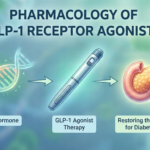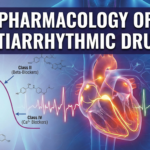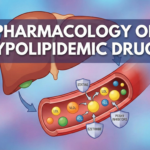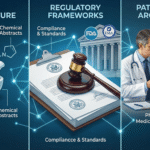Herbal and natural supplements comprise a broad range of dietary products used alongside or instead of conventional medicines, but their evidence base, quality, and safety profiles vary widely, requiring structured evaluation for efficacy, interactions, adulteration, and organ toxicity before use. Unlike prescription drugs, most supplements are not reviewed for safety or effectiveness before marketing in the United States, which shifts responsibility to prescribers and patients to assess benefit–risk with authoritative resources and vigilance for adverse effects.
Definitions and scope
Dietary supplements are orally administered products intended to supplement the diet that contain one or more dietary ingredients such as vitamins, minerals, herbs or botanicals, amino acids, enzymes, or extracts, and they must be labeled as dietary supplements by regulation. Herbal supplements—also called botanicals—are a subset of dietary supplements containing one or more plant-derived materials used for purported health benefits. The amount and quality of scientific evidence behind individual ingredients vary markedly, so a single approach to all “natural products” is inappropriate in clinical pharmacology.
Regulatory context
Under U.S. law, dietary supplements are regulated differently from prescription and OTC drugs, and the FDA generally does not review supplements for safety or effectiveness before they reach the market. Manufacturers must submit safety data only for “new dietary ingredients” not marketed before 1994, and the FDA typically acts after problems emerge, which underscores the importance of independent evaluation and postmarketing vigilance. In 2023, the FDA launched a Dietary Supplement Ingredient Directory to centralize safety and regulatory communications on ingredients used in supplements, which can inform risk assessment and counseling.
Evidence landscape
Some supplements have substantial research (e.g., certain vitamins and minerals), while others have limited or inconsistent evidence, and consumer products may differ materially from those tested in trials. The NIH Office of Dietary Supplements (ODS) provides clinician-oriented fact sheets on vitamins, minerals, botanicals, probiotics, and other ingredients that summarize efficacy, dosing, and safety for practice. Because labeling may not accurately reflect content or purity, extrapolating benefits from published studies to retail products is often uncertain without quality verification.
Quality and adulteration
Independent investigations and regulatory alerts have shown that some supplements—especially those marketed for weight loss, sexual enhancement, and bodybuilding—contain hidden prescription drugs or undeclared substances, posing direct toxicity and interaction risks. Label claims may not match actual composition, and contamination with heavy metals, pesticides, microbes, or pharmaceuticals has been documented in the herbal and dietary supplement category. Differences in plant part used, harvest conditions, and manufacturing practices contribute to variability in strength and composition, complicating dose–response and safety extrapolation.
Drug–supplement interactions
Drug interactions are among the most important safety concerns with botanicals, as ingredients can induce or inhibit drug-metabolizing enzymes and transporters or exert pharmacodynamic effects that augment or antagonize medicines. St. John’s wort is a well-known example that interacts with drugs such as antidepressants, underscoring the potential for reduced efficacy of coadministered medications or adverse syndromes when combined. Because interaction risks are product-specific and patient-specific, clinicians should systematically review medication lists before recommending or approving supplement use.
Organ toxicity focus: hepatotoxicity
Herbal and dietary supplements (HDS) account for a significant share of idiosyncratic drug-induced liver injury cases in the U.S. Drug-Induced Liver Injury Network, rising from roughly 10% to more than 16% of cases over time. LiverTox emphasizes that adulteration, mislabeling, and multi-ingredient formulations often obscure the causal agent, and pyrrolizidine alkaloids exemplify a specific mechanism causing sinusoidal obstruction syndrome. Management parallels conventional DILI: immediate cessation, evaluation for severity signals (coagulopathy, encephalopathy, jaundice), exclusion of other causes, and monitoring until resolution.
Special populations and perioperative care
Many supplements have not been adequately studied in pregnancy, lactation, children, or older adults, and caution is recommended in these groups unless clear safety data exist. Supplements may increase surgical risk via bleeding, hemodynamic instability, or anesthetic interactions, so disclosure and preoperative discontinuation planning are essential. Products can pose particular risks in chronic disease states or polypharmacy where interaction and organ injury risks compound baseline vulnerability.
Clinical counseling points
- Verify indication, evidence, dose, and duration using ODS fact sheets and similar authoritative resources, recognizing that product content may differ from trial materials.
- Screen carefully for drug–supplement interactions and advise against combining high-risk categories with narrow-therapeutic-index drugs without specialist input.
- Prefer products with transparent labeling and established quality controls while recognizing that regulation does not ensure efficacy or safety premarket.
- Educate patients that “natural” does not guarantee safe or appropriate, and urge disclosure of all supplement use to clinicians to prevent harm.
Selected examples and safety notes
- St. John’s wort: Interacts with drugs such as antidepressants, potentially altering intended effects and posing risk for adverse outcomes, so unsupervised use with prescription medicines is discouraged.
- Kava: Case reports and health system advisories caution that use can cause severe liver injury, and the FDA has issued warnings against its use for safety concerns.
- Weight loss/sexual enhancement/bodybuilding products: High prevalence of adulteration with prescription drugs or undisclosed compounds necessitates avoidance or rigorous vetting.
Table 1. What distinguishes supplements from medicines
Table 2. Common clinical questions and quick answers
Practical workflow for clinicians
- Clarify the patient’s goal and explore conventional options with established benefit–risk profiles before considering supplements.
- If a supplement is pursued, select a single-ingredient product with published data, counsel on expected benefit and risks, and set a time-bound reassessment plan.
- Check for drug interactions and category-specific hazards, especially for serotonergic agents, anticoagulants/antiplatelets, immunosuppressants, and narrow-therapeutic-index drugs.
- Monitor for adverse effects and biochemical injury when risk is plausible, and discontinue promptly if safety signals appear.
Patient education essentials
- Supplements may interact with medications or be unsafe in certain conditions, and many have not been tested in pregnancy, lactation, or pediatrics.
- Products for weight loss, sexual enhancement, and performance are high-risk for undeclared drugs or contaminants, and caution or avoidance is prudent without verified quality.
- Report all supplement use to healthcare providers, especially prior to surgery or when starting or changing prescription medicines.
Where to look up ingredients
- The NIH ODS provides clinical fact sheets that synthesize evidence on vitamins, minerals, botanicals, probiotics, and more for health professionals.
- The FDA’s Dietary Supplement Ingredient Directory consolidates ingredient-specific regulatory and safety communications for quick reference.
- LiverTox offers ingredient- and product-specific profiles for hepatotoxicity risk appraisal and management guidance.
High-yield cautions
- Supplements are not a substitute for evidence-based pharmacotherapy and can cause drug–drug interactions or organ injury despite “natural” origin.
- The absence of premarket efficacy and safety review distinguishes supplements from medicines and necessitates independent clinical scrutiny.
- Hepatotoxicity from herbal and dietary supplements is a recognized and growing subset of DILI, with complex causality due to adulteration and multi-ingredient formulations.
References
- National Center for Complementary and Integrative Health (NCCIH). Dietary and Herbal Supplements. 2020–2024.
- National Center for Complementary and Integrative Health (NCCIH). Safe Use of Complementary Health Products and Practices. 2023–2024.
- National Institutes of Health, Office of Dietary Supplements (ODS). Vitamin and Mineral Supplement Fact Sheets (and other dietary supplement resources). 2025.
- National Institute of Diabetes and Digestive and Kidney Diseases. LiverTox: Herbal and Dietary Supplements (HDS). 2025.
- Kaiser Permanente Health System. A Guide to Herbal Remedies. 2022.
📚 AI Pharma Quiz Generator
🎉 Quiz Results
Medical Disclaimer
The medical information on this post is for general educational purposes only and is provided by Pharmacology Mentor. While we strive to keep content current and accurate, Pharmacology Mentor makes no representations or warranties, express or implied, regarding the completeness, accuracy, reliability, suitability, or availability of the post, the website, or any information, products, services, or related graphics for any purpose. This content is not a substitute for professional medical advice, diagnosis, or treatment; always seek the advice of your physician or other qualified health provider with any questions you may have regarding a medical condition and never disregard or delay seeking professional advice because of something you have read here. Reliance on any information provided is solely at your own risk.









